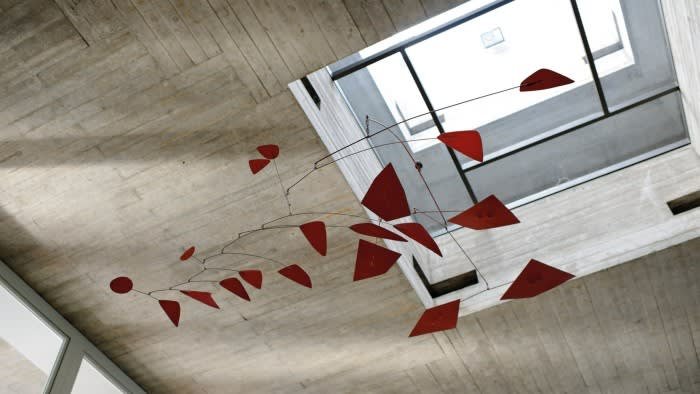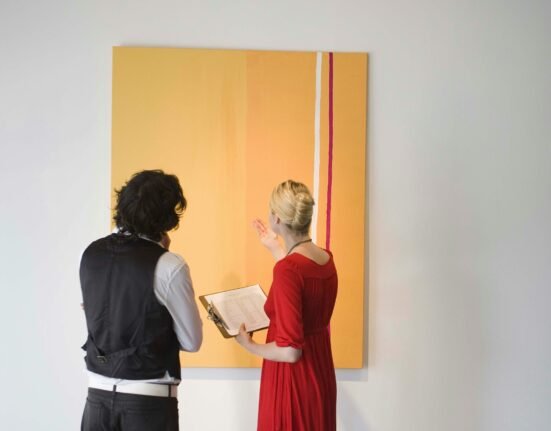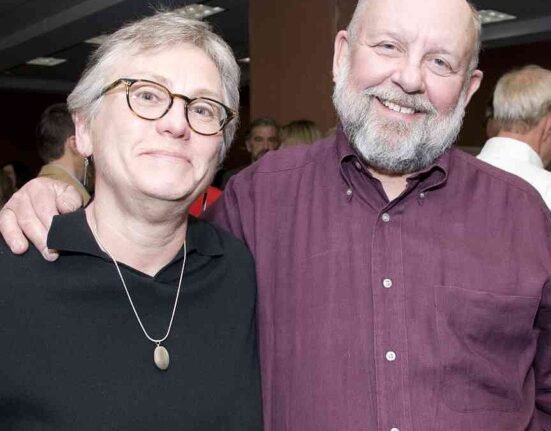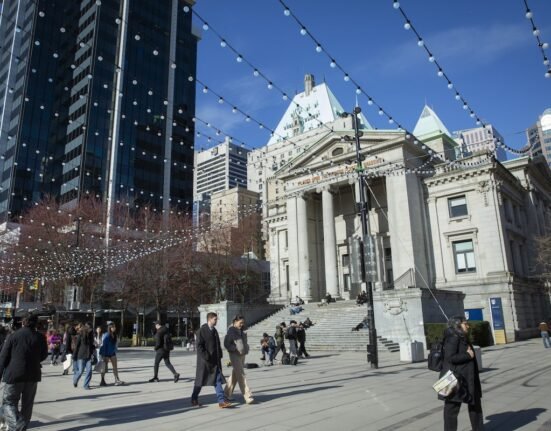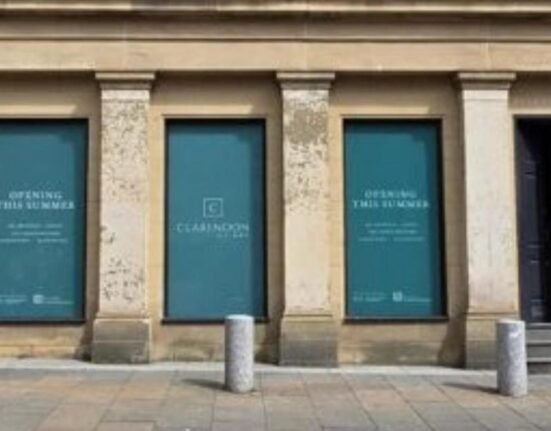Yvette Sánchez receives regular lucrative offers for works in the art collection she oversees, from international auction houses to rich Gulf buyers. But she refuses them all, respecting the way the collection was assembled and its purpose today.
Sánchez works at the University of St Gallen, the Swiss business school founded in the late 19th century, which has since diversified into law, international affairs and computer science. It has also embraced a more cultural topic for more than half a century: art acquisition.
The university’s brutalist, postwar campus is a showcase for dozens of paintings, photographs and sculptures by renowned artists, from Giacometti and Miró to Calder and Richter. “It’s so incredible that we have all these pieces, but we do not display them like in a museum or hide them away,” says Sánchez. “They are really integrated. There is no barrier. Students see them every day.”
Many universities have their own art collections. A far smaller but growing number of business schools now do, too. But there is a wide variety of approaches to the selection of works, the ways in which they are funded and displayed (often poorly online), and the extent to which they are woven into student and faculty life.

Gerald Schwartz, the founder of Onex, a Canadian investment manager, recalls how his parents loved and collected art, inspiring him to do the same. But he was struck, while studying at Harvard Business School, from which he graduated in 1970, that there was almost no art on display. “It’s important people develop interests other than what happens when they go to work,” he says.
In 1995, Schwartz began a collection for his alma mater, and has since organised annual trips to galleries and studios of young and “thought-provoking” artists. A group of Harvard students and staff agree a selection and use his donation to buy items — typically for less than $5,000 each. “Everyone gets a say, probably everyone gets a veto,” he says, before adding: “It’s fair to say, I get listened to closely.”


Elsewhere, art acquisitions have often been catalysed by new buildings. At the University of Michigan, for example, Stephen Ross, the real estate developer and art collector who gave his name to its School of Business, lent his support. With extra funding from other donors, Kathleen Dolan — an art expert and wife of the then dean, Robert — bought most of the 250 works in the Ross collection.
“There was some blue-chip art, and [other works] including some commissioned from young artists,” says Wendy MacGaw, who helps manage the collection. “There was definitely a focus to bring in art that would challenge people.”
Around the same time, Bocconi in Milan took advantage of new buildings to host a “gallery”, working with artists to loan and sometimes donate their art, generating a cultural hub for the city. “We hope our students become successful managers and entrepreneurs, but they need a broad culture,” says Prof Antonella Carù. “The idea is to create a beautiful environment to develop their critical thinking.”

At Chicago’s Booth School of Business, the process also began early this century, with its new building, supported by a $5mn endowment earmarked for art by David Booth, the businessman who also gave his name to the institution. Today, a group including his former wife, Suzanne Deal Booth, has an annual $250,000 budget to spend, expanding a contemporary art collection that already numbers almost 1,000 items.
Canice Prendergast, an economics professor who oversees the acquisitions, says there is still room for new purchases but worries about keeping the selection committee fresh. “One of the challenges is not getting locked into a particular perspective,” he says. “What I’m afraid of is [that] someone will say, at some point, that this was such an early 21st-century collection.”

Schools including Booth and Ross have developed courses on art appreciation and, sometimes, on the art market and cultural management. Less common are initiatives to bring artistic creativity and innovation into the core management curriculum. The Stockholm School of Economics has, perhaps, gone furthest over the past decade in integrating arts into its strategy. It has raised funds to commission artists to produce site-specific work inside its classrooms.
“Education is about opening doors and increasing possibilities,” says Lars Strannegård, the dean. “Art becomes incredibly important to open up your view of the world and serve as intellectual itching power. Our classrooms are artworks in their own right.”

Pierre Guillet de Monthoux, who teaches at the school, welcomes the contrast of its collection today with the commissioned portraits of former deans, which signalled the limits of its engagement with art in decades past. “There’s lots of conformity in business schools and, when art becomes decoration, interest fades, engagement goes away and provocation disappears,” he says.
But he laments the more radical era of the 1970s, described in his book Curating Capitalism: How Art Impacts Business, Management, and Economy, when artists worked within, and all but took over, some businesses. Today, with prices soaring for works often bought as speculative investments and rarely publicly displayed, business has more than ever taken over art.

